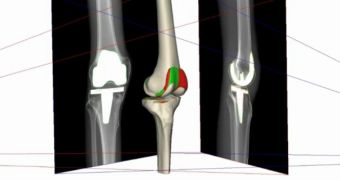Scans are used every year by many doctors in their everlasting quest to heal maladies and injuries, but there's always room for technique improvement and better perspectives. Materialize is now offering both.
Materialise, a company headquartered in Leuven, Belgium, provides medics with software that allows them to examine and process data gained from various analysis and diagnostic procedures.
The company has released a new software suite which, among other things, allows X-ray scans to be converted into three-dimensional modules.
Right now, X-rays are still examined virtually, on a monitor, or as plastic sheets held against a backlit screen or window.
Based on the drawing that resulted from whatever scan machine was used on the patient, the “drawing” lets medics know if bones are fractured and how.
The new software module in the Mimics Innovation Suite (which includes mater-3Mimics 17.0 and 3-Matic 9.0 software solutions) only needs two X-rays taken from a patient, though they do need to be made at multiple angles. Seeing exactly how a bone was injured and where will trounce guesswork any day, that's a no brainer.
There's a new Pulmonary module too, which can gleam more data from regular lung CT scans (computed tomography).
All in all, Materialize is rapidly expanding its collection of 3D software offerings, complementing its range of additive manufacturing equipment in the process.
And it's definitely possible to pull even more use out of the 3D X-ray module than just displaying the design on a monitor.
After all, often it's just more useful and convenient to hold the object of your contemplation in your hands.
So, now that medics can get 3D models of broken or otherwise damaged bones, they can use 3D printers to make physical models of them. Those, in turn, can be used for surgery planning and even practice runs.
It should also make it easier to create replacements. After all, it would be a shame if that successful 3D printed skull implant wasn't followed up on. No reason to amputate a leg or live with a lifetime of pains if only one bone is shattered. You should be able to just replace the tibia or femur if that's the case.
Human cartilage is already being 3D printed as well, and if push comes to shove, you can just implant a hip too.
It's not quite the same as 3D printing replacement organs, but until technology advances enough to make that possible, we'll just have to make do. And this year's “making do” is loads better than last year's.

 14 DAY TRIAL //
14 DAY TRIAL // 